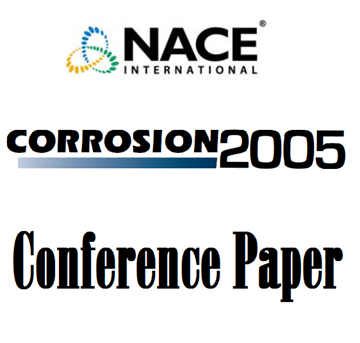Search
Products tagged with 'scc'
View as
Sort by
Display
per page
05157 Critical Review: Fas Assessment Methods for Crack-Like Flaws in Pipelines
Product Number:
51300-05157-SG
ISBN:
05157 2005 CP
Publication Date:
2005
$20.00
06156 OPERATIONAL LIMITS FOR AUSTENITIC STAINLESS STEELS IN H2S-CONTAINING ENVIRONMENTS
Product Number:
51300-06156-SG
ISBN:
06156 2006 CP
$20.00
07100 Sour Service Testing of High Strength TS Temper CuNiSn Alloy (UNS C72900)
Product Number:
51300-07100-SG
ISBN:
07100 2007 CP
Publication Date:
2007
$20.00
07564 FCCU Light Ends Plant Carbonate Stress Corrosion Cracking Experience
Product Number:
51300-07564-SG
ISBN:
07564 2007 CP
Publication Date:
2007
$20.00
51316-7126-Qualification of Super 13Cr-110 in HPHT Sour Well Service with Concentrated Brines
Product Number:
51316-7126-SG
ISBN:
7126 2016 CP
Publication Date:
2016
$20.00
51316-7139-Metallurgical Methods used to Assess the Significance of Pipeline Stress Cracking
Product Number:
51316-7139-SG
ISBN:
7139 2016 CP
Publication Date:
2016
$20.00
51316-7157-The Effect of Medium Density Clear Brine Fluids upon the Environmental Cracking Behavior of High Strength Alloy UNS S42028
Product Number:
51316-7157-SG
ISBN:
7157 2016 CP
Publication Date:
2016
$20.00
51316-7174-Utilizing Nickel Alloy metal coating as an alternative to PWHT
Product Number:
51316-7174-SG
ISBN:
7174 2016 CP
Publication Date:
2016
$20.00
51316-7193-Influence of Magnesium on SCC Susceptibility of Duplex Stainless Steels in Boiling Solutions
Product Number:
51316-7193-SG
ISBN:
7193 2016 CP
Publication Date:
2016
$20.00
51316-7237-Corrosion Assessment of Nickel-based Alloy Candidates for SCWR Fuel Cladding
Product Number:
51316-7237-SG
ISBN:
7237 2016 CP
Publication Date:
2016
$20.00
51316-7325-Investigation of the Stress Corrosion Cracking Behavior of Duplex and Lean Duplex Stainless Steel Parent and Weldment Materials in Sour Service
Product Number:
51316-7325-SG
ISBN:
7325 2016 CP
Publication Date:
2016
$20.00
51316-7355-UNS N09955 Corrosion Cracking Resistance
Product Number:
51316-7355-SG
ISBN:
7355 2016 CP
Publication Date:
2016
$20.00












